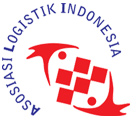Multi-Client versus Dedicated Distribution Center: Which model better fits your business?
John Peters
Many manufacturers have dedicated distribution centers where all the space, equipment and resources are established solely to serve that manufacturer's particular needs. This can, and does work very well in many circumstances. But in some cases, working within a multi-client distribution center setting may be the better option. How can a manufacturer determine which model will better fit their business? Let's take a look at a few things a manufacturer should take into consideration when determining which distribution model they should use.
1) Size: Sometimes a manufacturer's needs are too small to justify a dedicated facility without a significant cost penalty. In other words, certain fixed costs are just too great for the manufacturer to carry alone; as is done in a dedicated setting. For example, for a typical 100,000 square foot facility, a full time manager is needed. The same full time manager is also needed for a 200,000 square foot facility. In either scenario, the raw labor cost is essentially the same; but the cost per unit is much better in the larger facility. The same is true for the software related to a Warehouse Management and Inventory Control system. The base cost is similar for any size building. Now, if two or more manufacturers share a space that is between 250,000-1,000,000 square feet, even though the space is larger, there will be a significant cost advantage, because all fixed costs are being shared across the companies, and their respective volumes.
2) Occasional Specialty needs: Some manufacturers have "occasional", yet consistent, needs for specialty equipment or capabilities. While they may not need them daily, they need them available at some point every month. Examples might include rail access, secondary packaging capabilities, or certain material handling equipment or attachments. In a dedicated facility, the entire cost of this type of specialty asset or capability must be borne by one user. In a multi-client setting, higher utilization of such equipment by multiple users can drive lower costs for all.
3) Commonality: A manufacturer should be able to partner with a provider that already has existing customers with similar needs. This may take the form of a common customer base, carrier base, or the need for similar specialty handling equipment. This not only creates the opportunity to share costs within a multi-client facility, but it also opens the door for collaboration between the manufacturers. For example, there may be an opportunity for pooled transportation to common consignees or the shared transportation by matching up shipments where one manufacturer's "light" product can be packed on a truck with another manufacturer's "heavy" product being shipped to a common location.
4) Scalability/Flexibility: Certain manufacturers have a product with a demand profile that includes a high degree of variability. This can be driven by seasonality, new product launches, or promotional support. Larger, multi-client facilities are better equipped to handle this need to flex up or down temporarily. Working within a larger facility can provide some extra space that can be ready for such volatile demands. If a manufacturer in 100,000 sq ft dedicated facility needs to surge 20%, the equivalent of 20,000 sq ft, it can be difficult. Such a surge represents a very large percentage of the base space. Now, that same 20,000 sq ft need to surge in a 500,000 sq ft multi-tenant building only represents 4% of the total capacity. Since most providers of multi-client services plan on surges, a 4% surge is not only easily handled, it is welcomed.
A multi-client facility may not be right for every company, but it can be a very cost effective and flexible solution for the right set of circumstances. This type of setting can deliver both a cost advantage and quality to the supply chain for a manufacturer whose distribution network fits the characteristics mentioned above. It is also important to partner with a provider that will focus on quality and continuous improvement to help find efficiencies wherever possible.
http://blog.ryder.com/2013/07/multi-client-dedicated-distribution-center-business/









